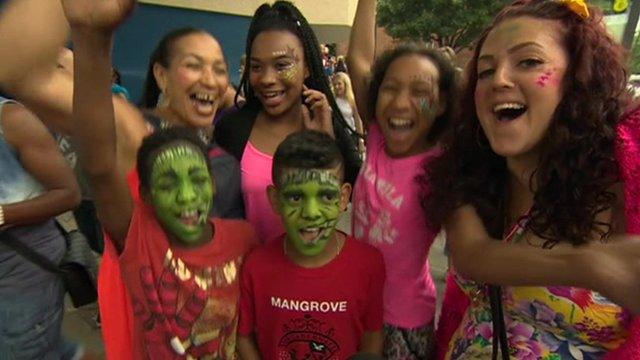In pictures: Fifty years of the Notting Hill Carnival
- Published
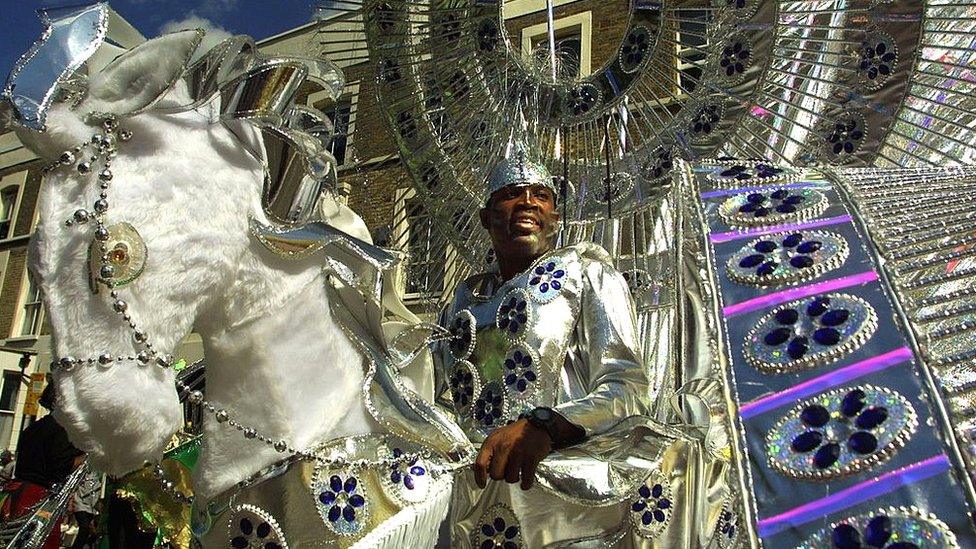
The carnival is held every August Bank Holiday weekend
Every year more than one million people descend on the streets of west London to enjoy two days of festivities at the Notting Hill Carnival.
Disagreement over when the event was first held means the carnival's 50th anniversary will be marked again this year, as it was in 2014 and 2015.
The first parades in the 1960s had many similarities to those held now.
BBC News looks at how the event has developed into what organisers claim is the largest street party in Europe.
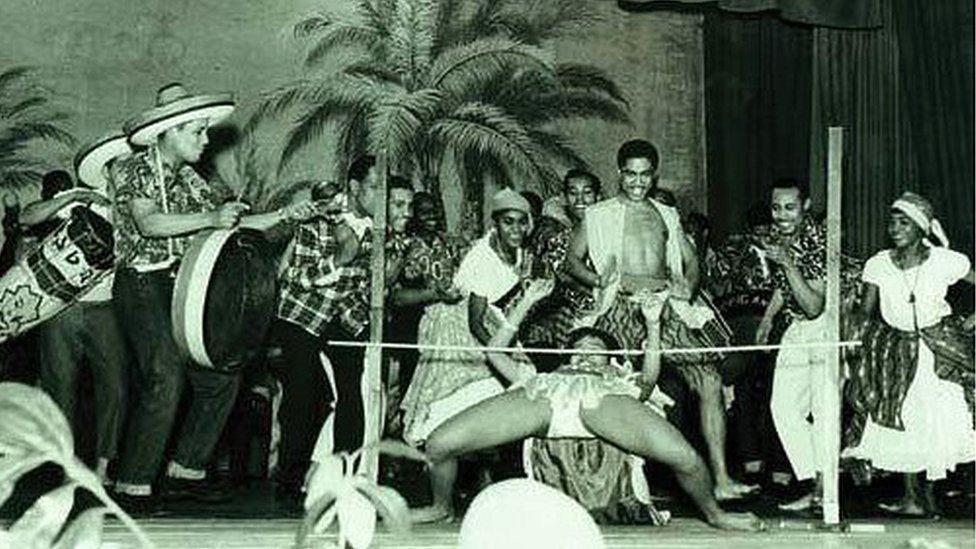
In 1959 a Caribbean style cabaret was held at St Pancras Town Hall to showcase the styles of carnival.
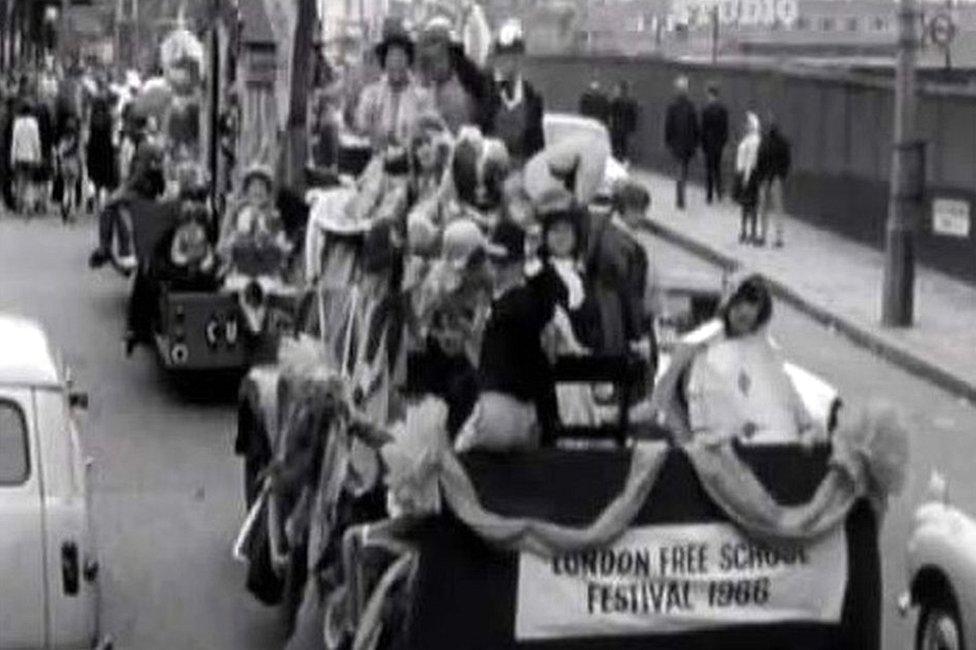
Other Caribbean events were held in London during the 1960s before a parade was organised in Notting Hill by a team led by social worker Rhuanne Laslett.

The organisers said the aim of the festival was to bring cultures together through arts and Caribbean steel bands.

By the 1970s the festival was attracting increasing numbers of performers each year to west London.
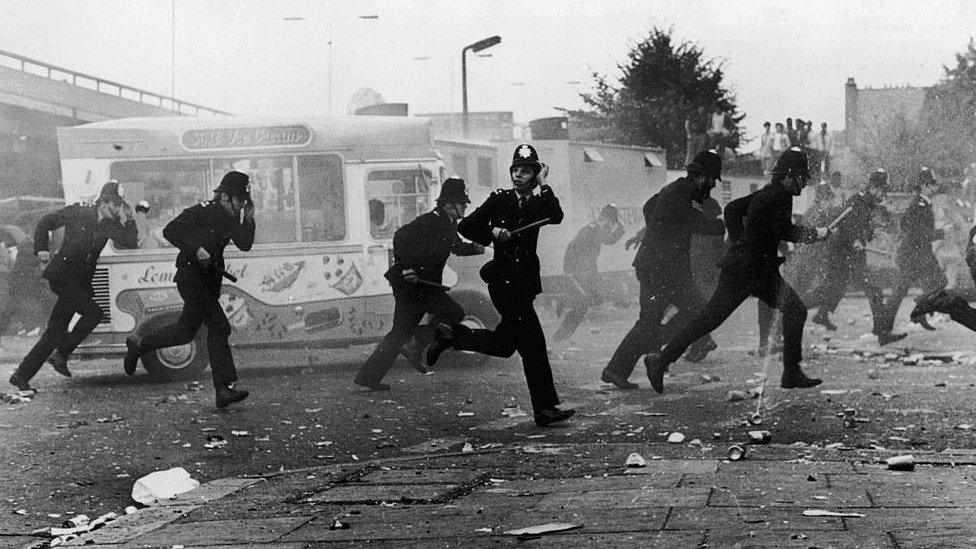
But racial tension simmered at some events with a riot following the carnival in 1976.
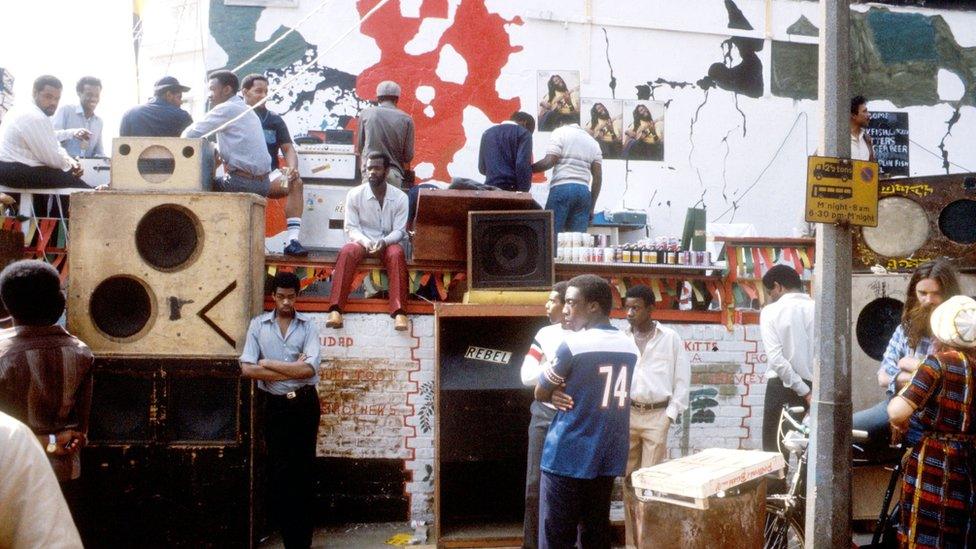
Static sound systems, like this one seen in 1981, have become a major part of the event. There are now 38 separate sound systems as well as the World Music Stage at Powis Square.
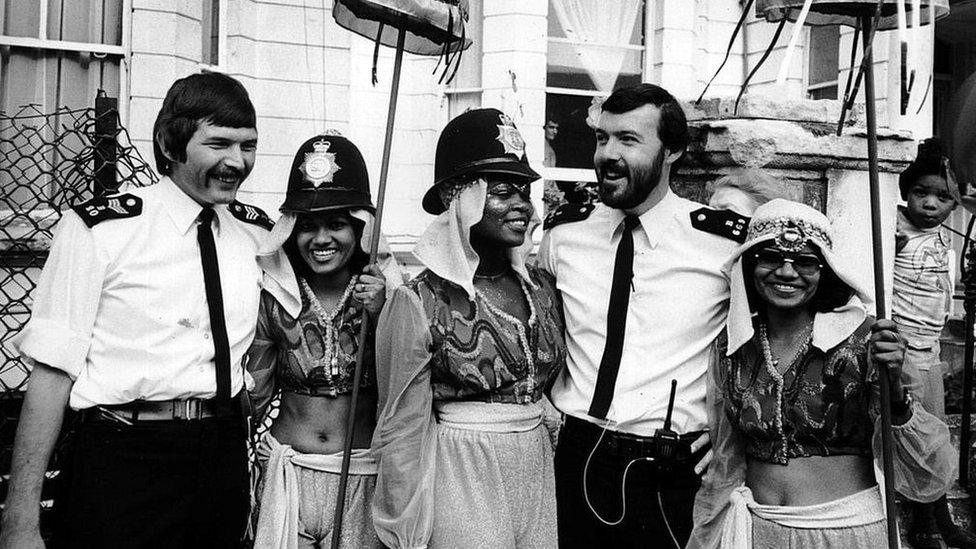
Relations between police and the organisers have improved over the years.
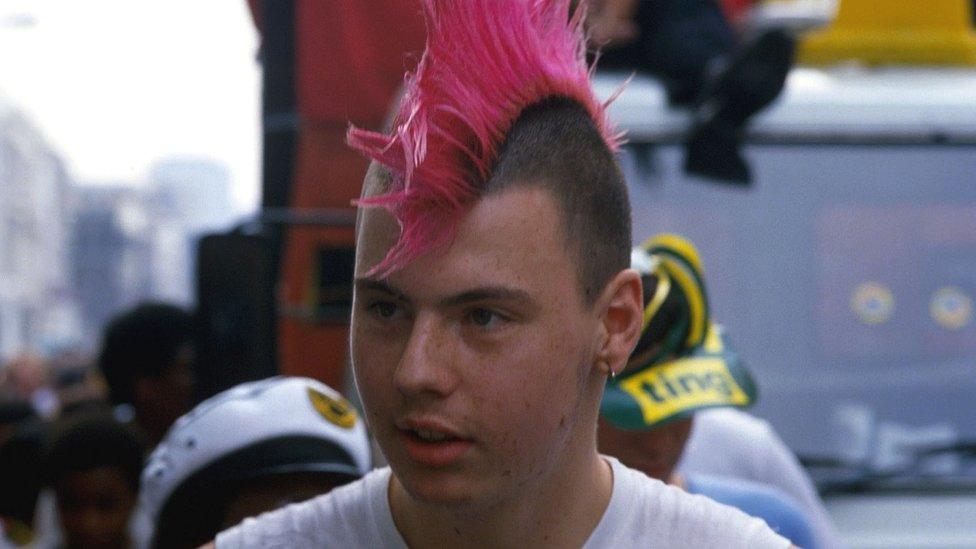
The carnival has always attracted a diverse crowd, like this punk in 1984.
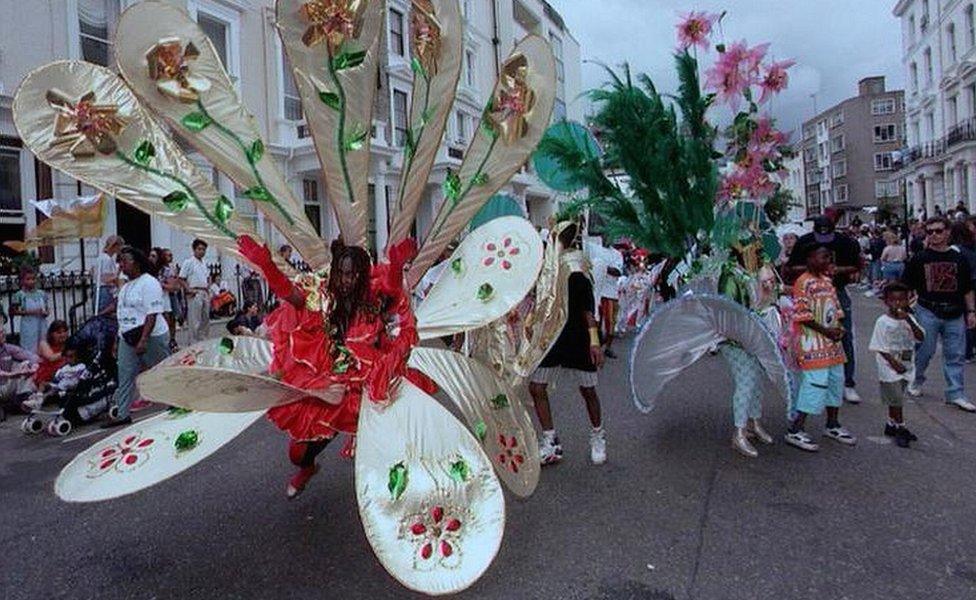
Masquerade bands, sound systems, steel bands, calypso and soca music are all carnival mainstays.
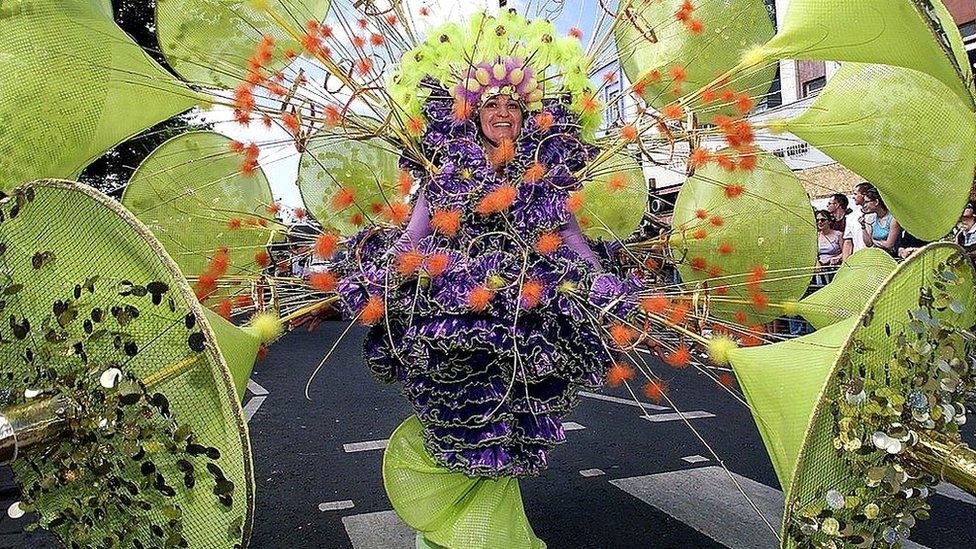
The costume troupes who parade each year are known as Mas or Masquerade bands.

International stars have made appearances at the carnival, like Wyclef Jean in 2003.
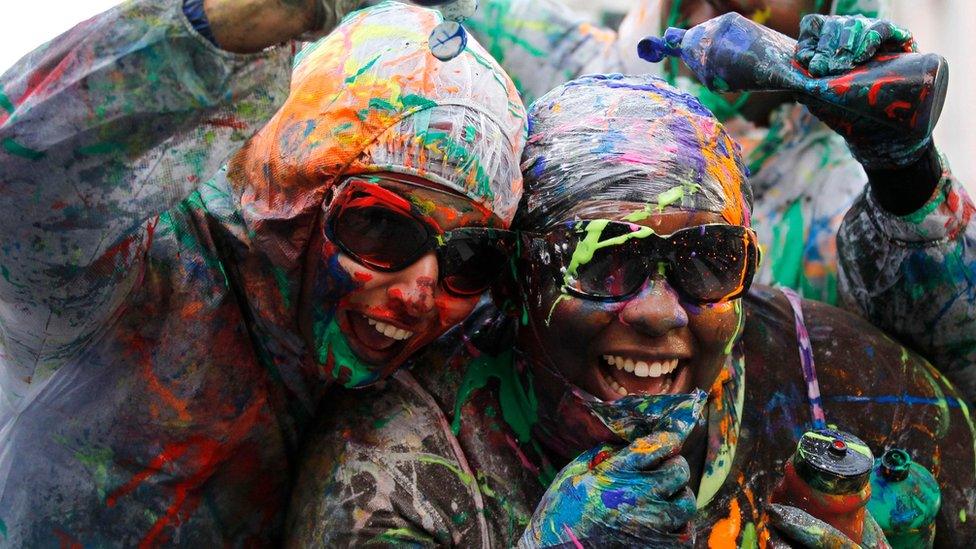
Jouvert marks the start of the carnival on Sunday morning, where performers cover each other in paint and chocolate.
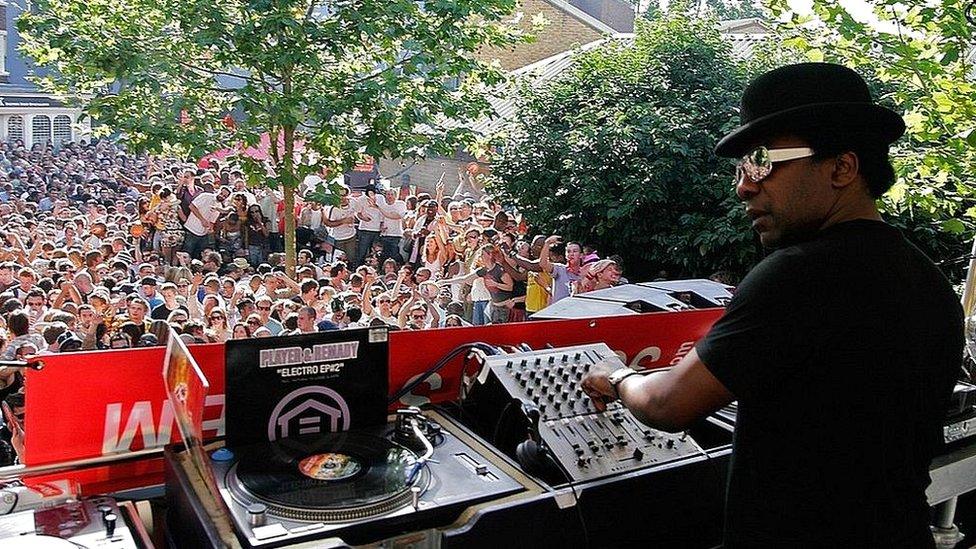
Veteran DJ Norman Jay, seen here in 2006, has become a mainstay at the carnival with his Good Times sound system.
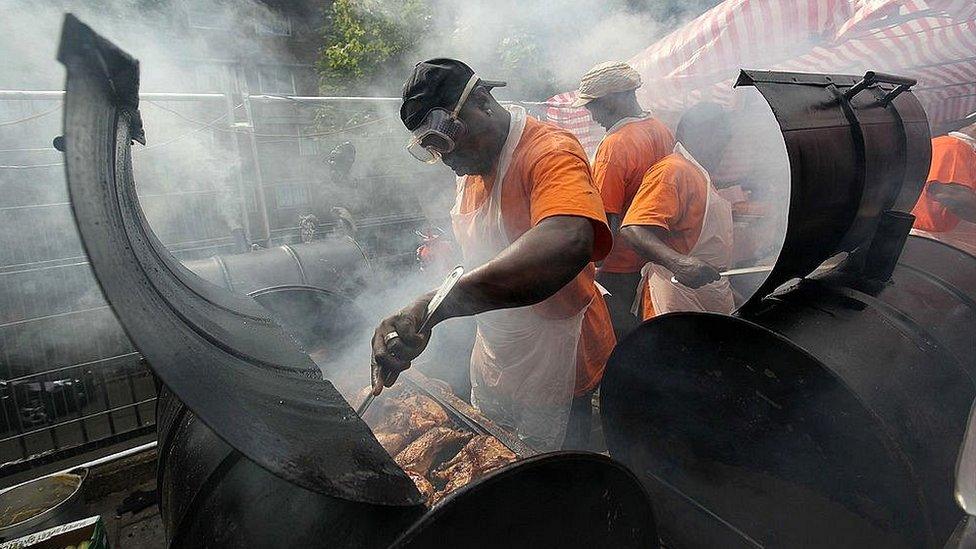
As well the costumes, music and dancing, the carnival is well known for its street food...
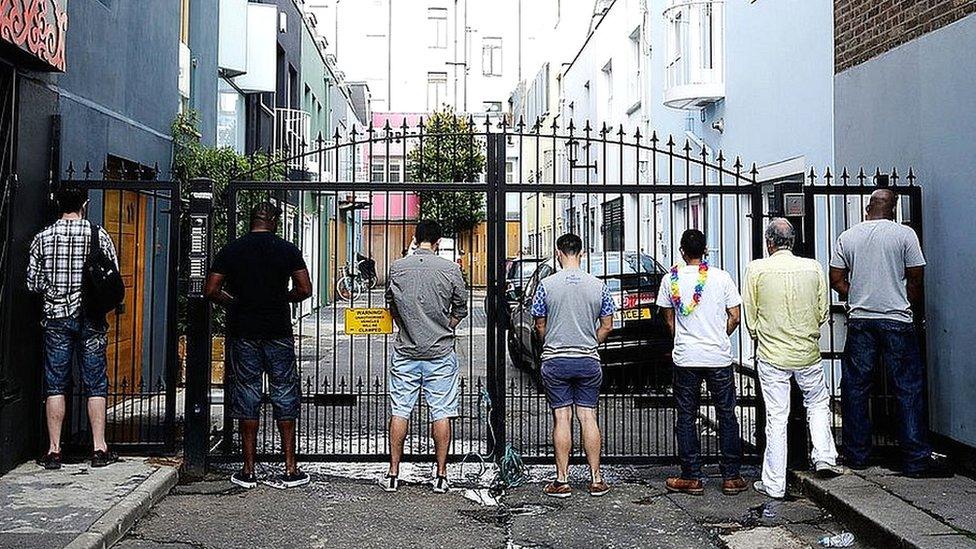
...as well as the enormous queues for the carnival toilets.

Samba band Batala have made numerous appearances and will be returning again in 2016.
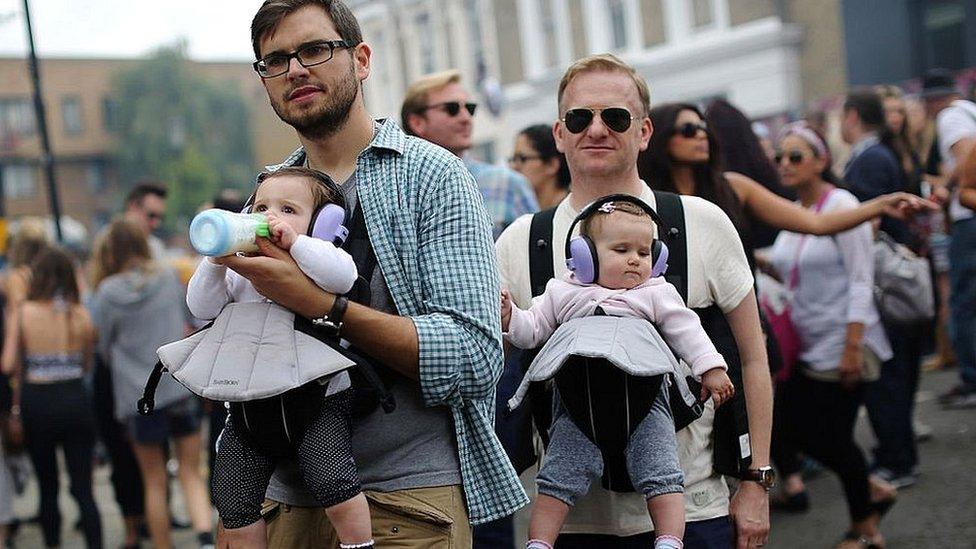
The Sunday parade is more child-friendly and proves popular with families.
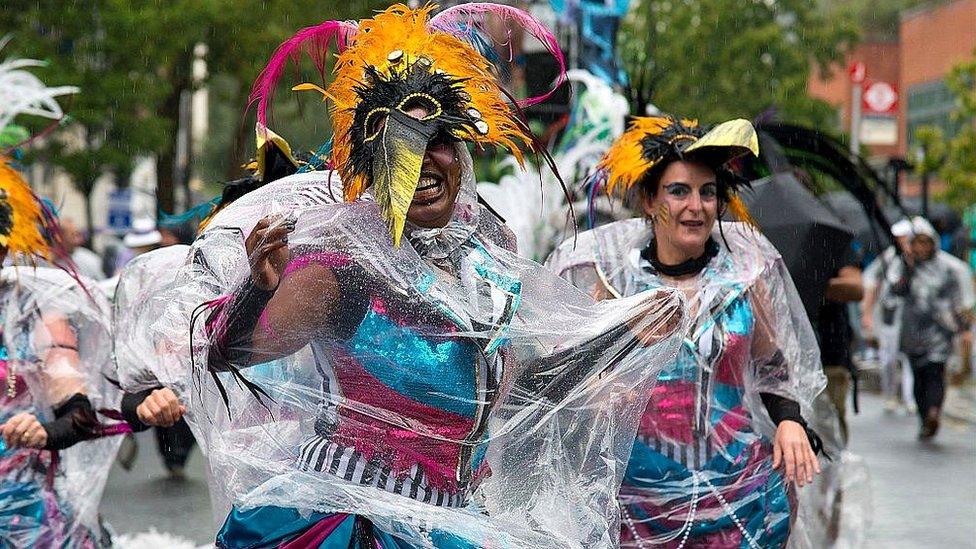
Revellers will be hoping for an improvement in the weather compared to 2015.
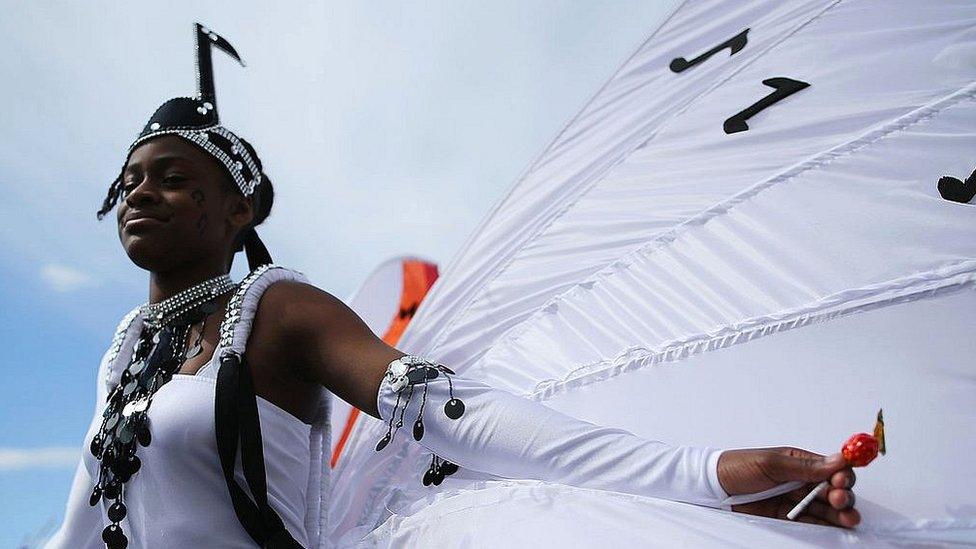
This year's parades begin at 10:00 BST on Sunday and Monday.
- Published31 August 2015
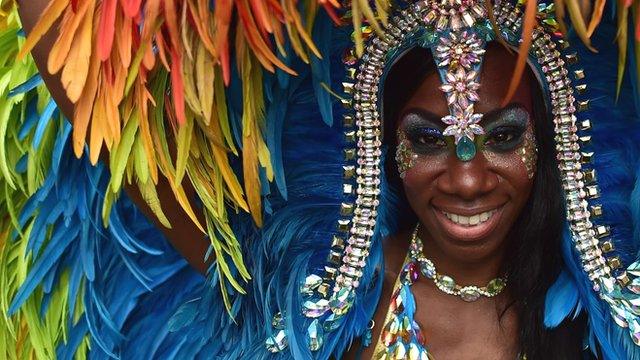
- Published30 August 2015

- Published30 August 2015
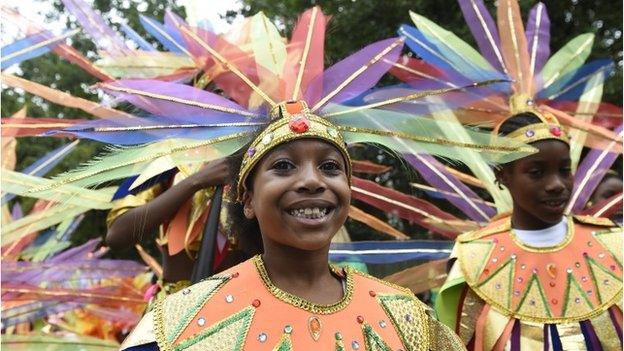
- Published30 August 2015
